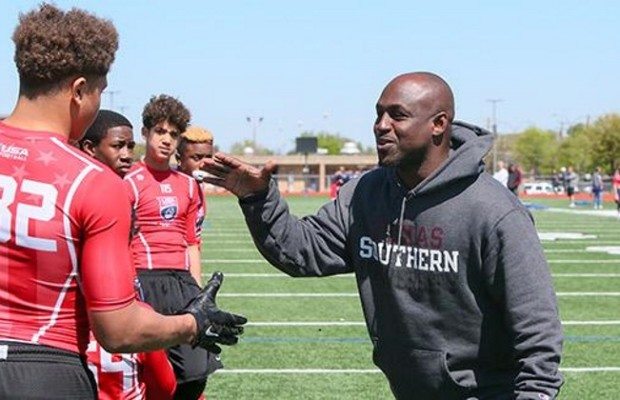Four Ways A National Team Scout Knows An Athlete Is A Future Division I Player

High school athletes across the country compete for their school with the same ultimate goal in mind: become a Division I football player.
While athletes are the ones who work towards earning that title, it is the coaches and scouts of Division 1 schools across the country who stress over which prospective players fit the bill and which ones might be better off at a lower level of competition.
The same can be said for USA Football’s coaches and scouts, who are searching for the top level talent to play for the U.S. National Teams in the International Bowl. This past winter, the U-19 National Team which defeated Canada 33-0 consisted of 48 athletes, all of whom will be moving on to join D-1 football programs this upcoming fall.
Link to original article at USAFootball.com
Coach Brock Willis is a football analyst for the University of South Florida who also served as a scout for the most recent West Palm Beach and Tampa Regional Development Camps. Working with Division 1 athletes on a daily basis at USF, Coach Willis knows what it takes to get to the highest level of collegiate football.
Athletic ability
“The main difference in being a Division I athlete is athletic ability. It’s about being the total package,” Willis said.
The old saying goes ‘don’t judge a book by its cover’ but in terms of athleticism, sometimes it’s not all too difficult to tell which players look like Division I athletes.
However, it’s not all about looking like a next-level athlete. When it comes down to it, determining the future of high school athletes is all about what they can do on the football field when it matters.
“When you’re looking for a kid that has the total package, you want to see the physical tools, appropriate sizes, speed, quickness, all of those things,” he said.
Academics
If athletes decide to take their talents to the Division I level, they have to be prepared for the challenges that arise both on and off the football field.
Coaches and scouts will leave no stone unturned when deciding whether or not an athlete is prepared for the rigors of being a Division I student-athlete.
“We’re not only looking at grades and test scores, we’re going to talk to guidance counselors and teachers, too. We talk to people that you see every single day,” Willis said.
Make no mistake about it, work ethic when studying the playbook is just as important when studying for mid-terms.
“We want someone who is going to be a winner in the classroom.”
Character Development
Football players know that team chemistry is one of the most important factors when it comes to a team’s success. A five-star recruit is meaningless if he comes into the program and immediately tears the locker room apart, turning teammates against each other.
“When we go recruit an athlete, we don’t just talk to that athlete. We may talk to someone in the community,” Willis said. “ We want to hear as many good things about a prospect as we possibly can.”
If a program has to decide between athletes of very similar skill-sets, a coaching staff knows what character qualities it is looking for to determine who is a better fit.
“We look for kids who are winners and leaders, but also humble. Kids who are recognized as being honest and hardworking. Kids who get involved in their community.”
Exposure
If a coach is going to watch a Division I prospect in person for the first time, there is a good chance he has already seen him play before.
“I would recommend (to an athlete looking to play college football) to get exposure. All different types of exposure,” Willis said. “Get your film out there. Don’t be afraid to e-mail college coaches.”
Especially when reaching out to programs across the country, it is important for athletes to take the time to put themselves out there.
“Your film is your resume. Regardless of whatever recruiting tool you use, your film is your resume.”